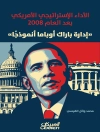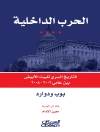The Politics of Evidence Based Policymaking identifies how to work with policymakers to maximize the use of scientific evidence. Policymakers cannot consider all evidence relevant to policy problems. They use two shortcuts: ‘rational’ ways to gather enough evidence, and ‘irrational’ decision-making, drawing on emotions, beliefs, and habits. Most scientific studies focus on the former. They identify uncertainty when policymakers have incomplete evidence, and try to solve it by improving the supply of information. They do not respond to ambiguity, or the potential for policymakers to understand problems in very different ways. A good strategy requires advocates to be persuasive: forming coalitions with like-minded actors, and accompanying evidence with simple stories to exploit the emotional or ideological biases of policymakers.
สารบัญ
Chapter 1. The Science of Policy Making.- Chapter 2. The Role of Evidence in Theories of the Policy Process.- Chapter 3. Health and advocacy: what are the barriers to the use of evidence in policy?.- Chapter 4. Evidence in environmental policy: learning lessons from health?.- Chapter 5. Conclusion: How to Respond to The Limits of Evidence-Based Policy Making.
เกี่ยวกับผู้แต่ง
Paul Cairney is Professor of Politics and Public Policy, University of Stirling. His research interests are in comparative public policy, including: comparisons of policy theories (Understanding Public Policy, 2012); outcomes in different countries (Global Tobacco Control, 2012), and UK and devolved policymaking (Scottish Politics, 2013).












